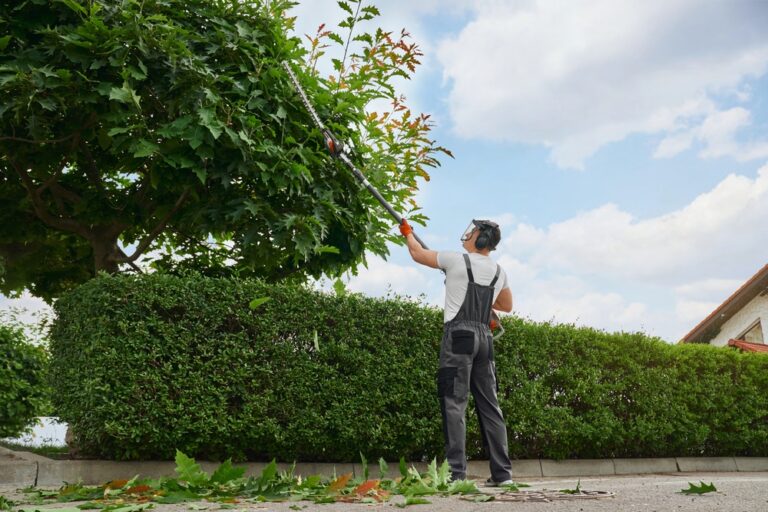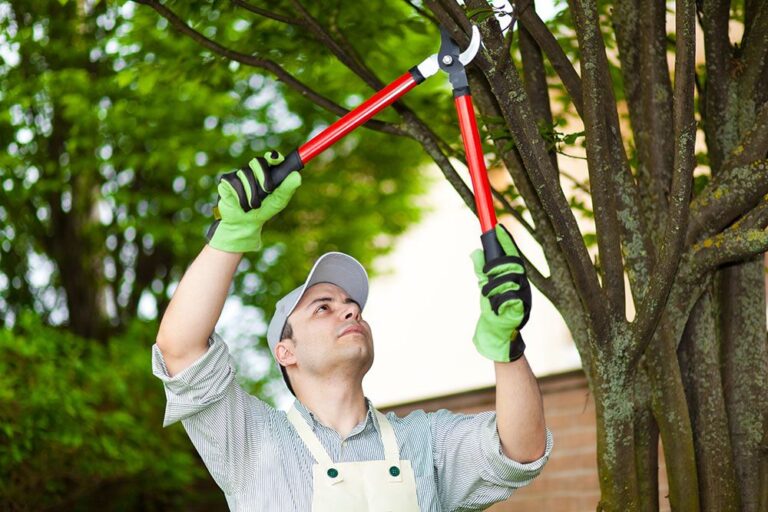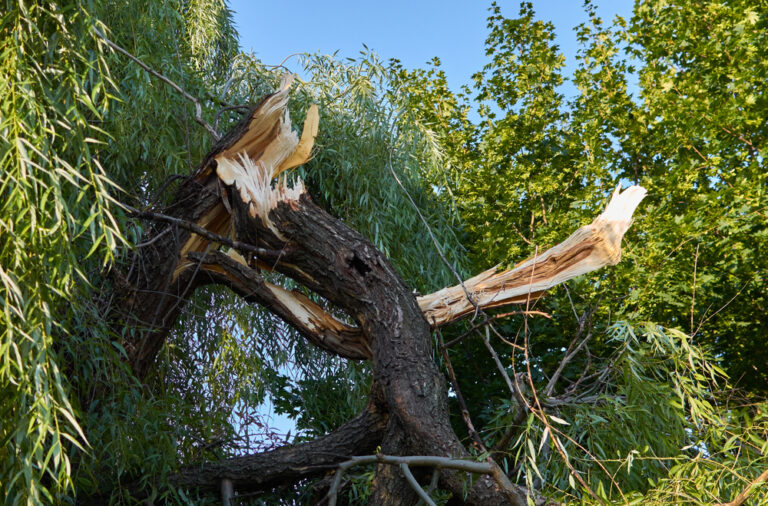Mastering Tree Trimming: Tools, Techniques, and Safety Precautions
In the realm of arboriculture, the practice of tree trimming stands as a cornerstone, serving as a gateway to optimal tree health, aesthetics, and safety. Rooted in the art of precision pruning, tree trimming entails the strategic removal of branches to eliminate diseased, damaged, or overgrown foliage, fostering the tree’s vitality and structural integrity. This comprehensive guide delves into the multifaceted world of tree trimming, exploring an array of specialized tools, advanced techniques, and indispensable safety precautions essential for mastering this venerable craft.
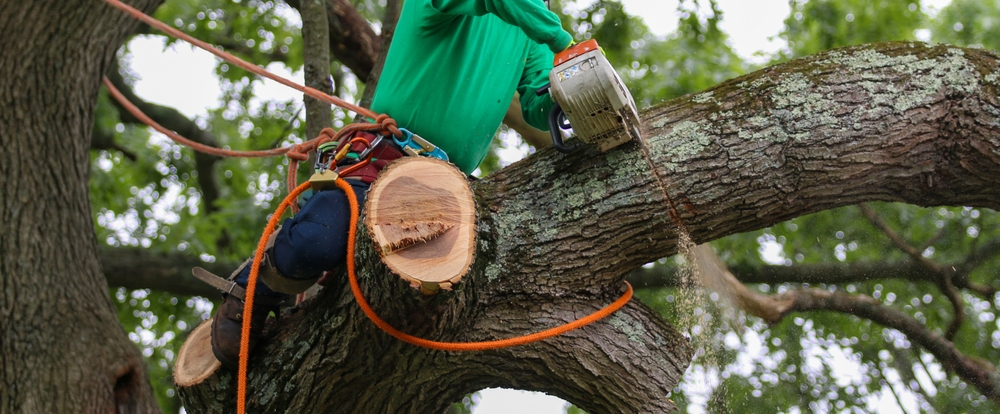
Tools Used in Tree Trimming
Pruning Shears:
These diminutive yet formidable tools represent the frontline warriors of the arborist’s arsenal. Characterized by their compact size and scissor-like design, pruning shears excel in executing precise cuts on branches up to 1/2 inch thick. Featuring razor-sharp blades and ergonomic handles, these handheld marvels offer unparalleled maneuverability, enabling arborists to navigate dense foliage with surgical precision.
Loppers:
With their elongated handles and robust cutting heads, loppers epitomize power and versatility in the world of tree trimming. Designed to tackle branches of up to 2 inches in diameter, loppers boast extended reach and enhanced leverage, facilitating effortless pruning in high branches and dense thickets. Whether contending with stubborn overgrowth or sculpting intricate canopy formations, loppers emerge as indispensable allies in the arborist’s quest for arboreal perfection.
Pole Pruners:
Elevating tree trimming to new heights, pole pruners transcend the limitations of conventional tools, offering access to lofty branches without the need for precarious climbing. Consisting of a telescopic pole affixed with a cutting head, these ingenious contraptions empower arborists to perform meticulous pruning tasks with unprecedented safety and precision. Whether shaping majestic canopies or mitigating hazardous overhangs, pole pruners stand as testaments to ingenuity and innovation in arboriculture.
Hand Saws:
As the stalwarts of traditional tree trimming, hand saws embody reliability, durability, and raw cutting power. Available in an array of sizes and configurations, hand saws are indispensable for tackling larger branches ranging from 2 to 5 inches thick. Equipped with razor-sharp teeth and ergonomic handles, these venerable tools excel in executing clean, precise cuts, ensuring minimal damage to surrounding foliage and optimal wound healing.
Techniques Used in Tree Trimming
Crown Reduction:
A strategic intervention aimed at reigning in a tree’s exuberant growth, crown reduction entails the selective removal of peripheral branches to reduce the tree’s overall size. By meticulously thinning out the outermost portion of the canopy, arborists can mitigate overcrowding, enhance light penetration, and restore balance to unruly foliage. This meticulous process involves identifying and targeting specific branches for removal, ensuring that each cut is executed with precision and foresight.
Crown Thinning:
Emphasizing quality over quantity, crown thinning revolves around the selective tree removal of superfluous branches within the canopy. By eliminating overcrowded or crossing branches, arborists enhance air circulation, sunlight exposure, and overall canopy health. This meticulous technique involves strategic pruning cuts aimed at creating a harmonious balance between foliage density and structural integrity, resulting in a healthier, more vibrant tree.
Crown Raising:
As trees mature and expand, their lower branches often droop and encroach upon surrounding spaces, posing hazards to pedestrians, vehicles, and infrastructure. Crown raising addresses this issue by selectively removing lower branches to elevate the tree’s canopy and increase clearance beneath its majestic boughs. This meticulous process involves identifying and removing obstructive branches while preserving the tree’s natural form and aesthetics, ensuring unimpeded passage and safety for all.
Pollarding:
Reserved for resilient species amenable to rejuvenation, pollarding represents a radical approach to tree trimming, involving the systematic removal of all branches, leaving behind a skeletal framework. This drastic intervention stimulates vigorous regrowth and maintains the tree’s desired dimensions and shape, ensuring long-term vitality and structural integrity. By harnessing the regenerative potential of certain species, arborists can sculpt majestic specimens that stand as testaments to nature’s resilience and adaptability.
Deadwooding:
Serving as the arbiter of arboreal health, deadwooding targets decrepit branches teetering on the brink of decay. By excising these perilous appendages with surgical precision, arborists safeguard against potential hazards while rejuvenating the tree’s vigor and vitality. This meticulous process involves identifying and removing dead or dying branches, promoting optimal wound healing and mitigating the spread of disease or decay throughout the tree’s structure.
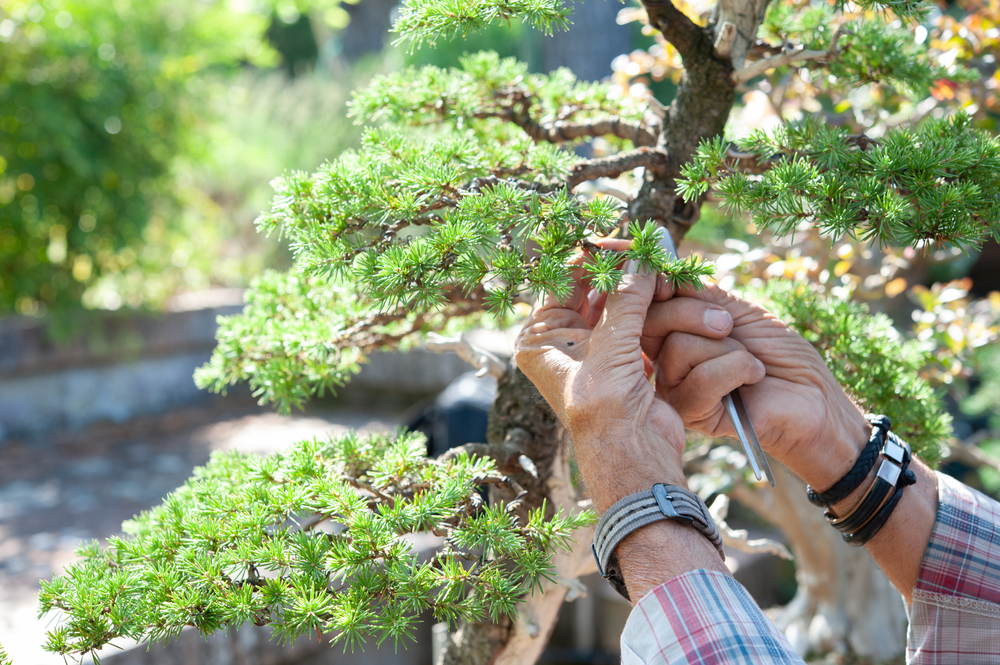
Safety Precautions
Armed with knowledge, expertise, and an unwavering commitment to safety, arborists embark on tree trimming expeditions fortified by stringent safety protocols and protective measures.
Importance of Safety:
Prioritizing safety above all else, arborists acknowledge the inherent risks associated with tree trimming and undertake meticulous precautions to mitigate potential hazards. From assessing environmental conditions to implementing safe work practices, safety remains paramount throughout every stage of the tree trimming process.
Protective Gear:
Donning an ensemble of protective gear, including gloves, goggles, and hardhats, arborists shield themselves from flying debris, sharp edges, and overhead hazards, ensuring a secure working environment. Additionally, specialized equipment such as chainsaw chaps and steel-toed boots provide additional protection against accidental injuries, enhancing safety and confidence in the field.
Proper Ladder Usage:
Adhering to proper ladder usage protocols, arborists ensure stability, balance, and optimal positioning while ascending lofty heights to perform precision cuts and delicate maneuvers. From selecting the appropriate ladder size to securing it against slippage or instability, meticulous attention to detail is crucial to preventing accidents and ensuring a safe, productive work environment.
Conclusion
In the intricate tapestry of arboriculture, tree trimming Richmond Va, emerges as a quintessential practice, harmonizing aesthetics, safety, and sustainability. Armed with an arsenal of specialized tools, advanced techniques, and unwavering dedication to safety, arborists navigate the verdant realm with finesse and precision, sculpting majestic arboreal landscapes that stand as testaments to nature’s enduring allure. Through meticulous pruning and steadfast vigilance, we embark on a journey of arboreal stewardship, nurturing trees to thrive and flourish for generations to come. As guardians of the green realm, we embrace the responsibility of preserving and enhancing the natural world, one branch at a time.
Tree Trimming Richmond
(804) 533-3943
https://treetrimmingrichmond.com/

